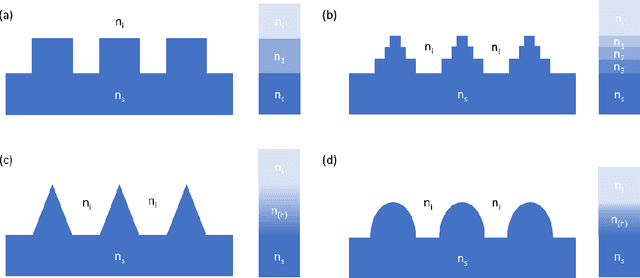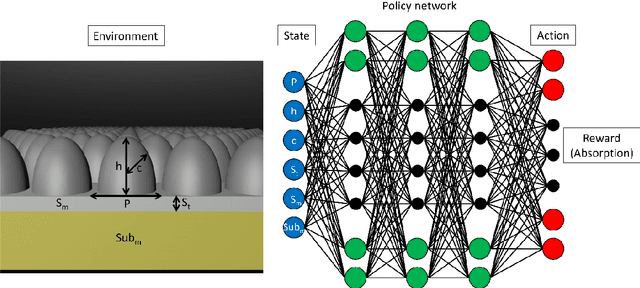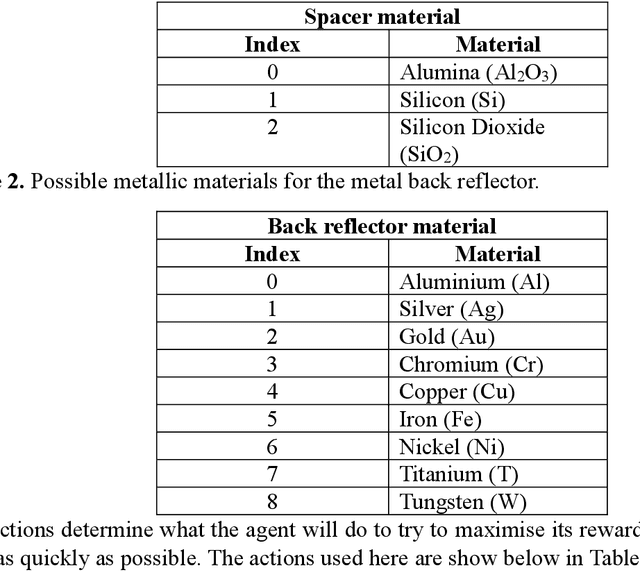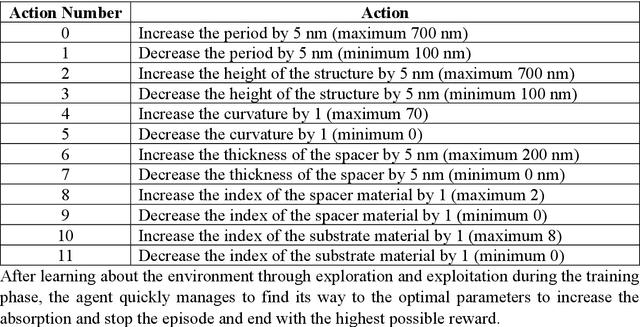Biomimetic Ultra-Broadband Perfect Absorbers Optimised with Reinforcement Learning
Paper and Code
Oct 28, 2019



By learning the optimal policy with a double deep Q-learning network, we design ultra-broadband, biomimetic, perfect absorbers with various materials, based the structure of a moths eye. All absorbers achieve over 90% average absorption from 400 to 1,600 nm. By training a DDQN with motheye structures made up of chromium, we transfer the learned knowledge to other, similar materials to quickly and efficiently find the optimal parameters from the around 1 billion possible options. The knowledge learned from previous optimisations helps the network to find the best solution for a new material in fewer steps, dramatically increasing the efficiency of finding designs with ultra-broadband absorption.
 Add to Chrome
Add to Chrome Add to Firefox
Add to Firefox Add to Edge
Add to Edge